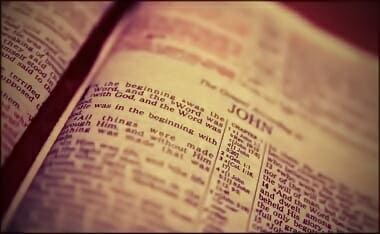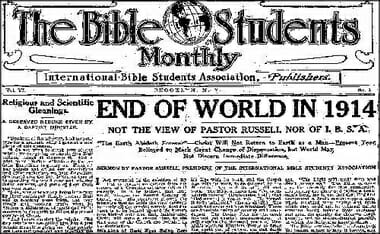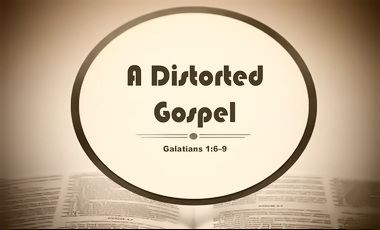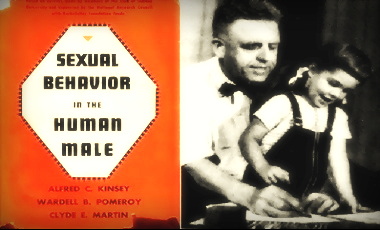(THIS WAS ORIGINALLY POSTED BY MYSELF IN JUNE OF 2007 AND IS AN IMPORT FROM MY OLD BLOG)
My views have changed a bit on Dr. Beckwith over the years since the original post seen below. Three posts summing up some doctrinal issues Protestants have with Catholicism are as follows:
- Doctrinal Differences Still Matter Between Catholics and Protestants
- Challenging Rome’s “Gospel” (John MacArthur)
- 2 Thessalonians 2:15… Oral Tradition (Roman Catholicism)
In other words, Dr. Beckwith has traveled so far into Catholic doctrine that I fear he is not saved by Calvary’s Cross.
I have slightly edited this import due to sites I originally got quotes from going defunct/under. Compared to the original post the extended quotes still have the same Beckwith quote in them, just some addition thoughts added.
IMPORT
From Catholic to Evangelical, to Catholic Again
On May 5th (2007), Francis Beckwith resigned as President of the Evangelical Theological Society, and the ETS in short order accepted this resignation.
Accepting members of the ETS:
- C. Hassell Bullock, President-Elect (Wheaton College),
- Bruce A. Ware, Vice-President (The Southern Baptist Theological Seminary),
- Edwin M. Yamauchi, At-large member (Miami University),
- Craig A. Blaising, At-large member (Southwestern Baptist Theological Seminary)
- Gregory K. Beale, At-large member (Wheaton College),
- David M. Howard, Jr., At-large member (Bethel Seminary),
- James A. Borland, Secretary-Treasurer (Liberty University),
- Andreas J. Köstenberger, JETS Editor (Southeastern Baptist Theological Seminary).
Besides Beckwith, a few others have recently joined the Catholic Church from Protestant backgrounds; some worth mentioning are Dr. Robert Koons, J. Budziszewski, Sen. Sam Brownback (R-Kan.), Scott Hahn, as well as Richard John Neuhaus (editor of First Things, a Catholic theological and philosophical journal).
Before I get into this whole thing I want to say that I am a huge, I mean huge, Beckwith fan. I have read every book he has edited and authored, as well as articles, and audio CD/DVD. My favorite books being:
- Relativism: Feet Planted Firmly in Mid-Air, co-authored by Greg Koukl;
- Politically Correct Death: Answering Arguments for Abortion Rights;
- Are You politically Correct? Debating America’s Cultural Standards;
- Do the Right Thing: A Philosophical Dialogue on the Moral and Social Issues of Our Time;
- To Everyone and Answer: A Case for the Christian Worldview.
Some of the very fun and enjoyable CD’s and DVD have been:
- Relativism (Summit Ministries);
- The Pluralist game (Summit);
- Political Correctness (Summit);
- Responding to Relativism (Stand to Reason Ministries – DVD).
I will probably continue to read all his works and follow his career, a career I hope to make a splash into at some point (that is, a professor). I also hope Summit Ministries keeps him on as a guest lecturer for the Colorado summer camp. My sons are getting close to the age of going and I would love to have Beckwith’s influence as one of many other godly men and women that take time out their schedules to inculcate truth into these young men and women, namely my two sons.
There’s my intro, take it or leave it. Remember that Luther wanted to “fix” the Church originally… not wanting to leave it (Luther did escape a waiting death sentence and died of old age… others weren’t so fortunate). BUT, there are a few principles both he and us “Protestors” have taken an unspoken oath to die for… peaceably. And Luther and others did die for those principles. That being said, all Christians are under assault not only by culture, but also by Islamo-Fascism. So if God has chosen to put Beckwith into a Church that desperately needs to realign with the conservative traditions that all of our faiths are founded on… who am I to get in the way of a larger and greater plan? I seem to get in the way of the plans He has for even my wife and I let alone a stalwart like Beckwith bringing sound thinking to Catholic seminaries and lay people. For instance, I will highlight just a small snippet of what Beckwith said in this interview:
You spent 32 years in the evangelical world. What could Catholics learn from evangelicals?
I learned plenty, and for that reason I do not believe I ceased to be an evangelical when I returned to the Church. What I ceased to be was a Protestant. For I believe, as Pope Benedict has preached, that the Church itself needs to nurture within it an evangelical spirit. There are, as we know, too many Catholics whose faith needs to be renewed and emboldened.
There is much that I learned as a Protestant evangelical that has left an indelible mark on me and formed the person I am today. For that reason, it accompanies me back to the Church.
For instance, because Protestant evangelicals accept much of the Great Tradition that Catholics take for granted — such as the Catholic creeds and the inspiration of Scripture — but without recourse to the Church’s authority, they have produced important and significant works in systematic theology and philosophical theology.
Catholics would do well to plumb these works, since in them Protestant evangelicals often provide the biblical and philosophical scaffolding that influenced the Church Fathers that developed the catholic creeds as well as the Church’s understanding of the Bible as God’s Word.
But these evangelicals do so by using contemporary language and addressing contemporary concerns. This will help Catholics understand the reasoning behind the classical doctrines.
In terms of expository preaching, as well as teaching the laity, Protestant evangelicals are without peers in the Christian world.
For instance, it is not unusual for evangelical churches to host major conferences on theological issues in which leading scholars address lay audiences in order to equip them to share their faith with their neighbors, friends, etc. Works by evangelical philosophers and theologians such as [J.P.] Moreland, [Paul] Copan, and William Lane Craig, should be in the library of any serious Catholic who wants to be equipped to respond to contemporary challenges to the Christian faith.
I read much of the works of Catholic philosophers, like Peter Kreeft and others. I would love to meet a new generation of Catholics that read evangelical authors like the ones mentioned above. Another question posed to Beckwith will follow a post by Beckwith from his blog. The below is a small snippet of what will soon be a flood of explanations and kindly debates as to why Dr. Beckwith left the “Protestors” to join the Catholic Church. Here is an excerpt from behind his reasoning from REFORMATION 21:
I have been asked my opinion both on this blog and in other conversations about the recent announcement by Frank Beckwith.
Dr. Francis Beckwith’s conversion, better yet, reversion to Rome was very interesting to me. For those of you who don’t know, Francis Beckwith is a well-known scholar, professor, and president of the Evangelical Theological Society. He resigned his position as president of ETS a few months ago when he declared that he had become a communicant in the Roman Catholic Church, the religion of his childhood.
In the letter explaining his return to the Roman Church Dr. Beckwith writes:
“During the last week of March 2007, after much prayer, counsel and consideration, my wife and I decided to seek full communion with the Roman Catholic Church. My wife, a baptized Presbyterian, is going through the process of the Rite of Christian Initiation for Adults (RCIA). This will culminate with her receiving the sacraments of Holy Communion and Confirmation. For me, because I had received the sacraments of Baptism, Communion, and Confirmation all before the age of 14, I need only go to confession, request forgiveness for my sins, ask to be received back into the Church, and receive absolution.”
I am saddened by the language of Dr. Beckwith’s letter. This goes to show that smart men can make large errors. How sad it is for a man who once affirmed Sola Scriptura to now embrace a religious system that rejects the sole sufficiency and unique authority of the Bible. What is also tragic is that he has rejected Jesus Christ as the one mediator between God and man and now seeks forgiveness of sins and “absolution” from the Roman Church.
Further on in his letter Beckwith writes:
“The past four months have moved quickly for me and my wife. As you probably know, my work in philosophy, ethics, and theology has always been Catholic friendly, but I would have never predicted that I would return to the Church, for there seemed to me too many theological and ecclesiastical issues that appeared insurmountable. However, in January, at the suggestion of a dear friend, I began reading the Early Church Fathers as well as some of the more sophisticated works on justification by Catholic authors. I became convinced that the Early Church is more Catholic than Protestant and that the Catholic view of justification, correctly understood, is biblically and historically defensible. Even though I also believe that the Reformed view is biblically and historically defensible, I think the Catholic view has more explanatory power to account for both all the biblical texts on justification as well as the church’s historical understanding of salvation prior to the Reformation all the way back to the ancient church of the first few centuries. Moreover, much of what I have taken for granted as a Protestant—e.g., the catholic creeds, the doctrines of the Trinity and the Incarnation, the Christian understanding of man, and the canon of Scripture—is the result of a Church that made judgments about these matters and on which non-Catholics, including Evangelicals, have declared and grounded their Christian orthodoxy in a world hostile to it. Given these considerations, I thought it wise for me to err on the side of the Church with historical and theological continuity with the first generations of Christians that followed Christ’s Apostles.”
Well, we could argue all day about whether or not Rome is a more faithful interpreter of the early church fathers. For now I will say that it is my conviction that the Protestant Reformers were far more faithful to the likes of Athanasius and Augustine than were leaders of the Roman Church during the Middle Ages and Renaissance. However, what is most important is that the Protestant Reformers were faithful to the Scriptures…..
The National Catholic Register (now found at Catholic Education Resource Center) interviewed Dr. Beckwith recently and they got to the nitty gritty of the matter. By the way, in case someone asks after reading this interview, I am a “First Things” evangelical! Here is the question posed followed by Beckwith’s response:
- “What led you back to the Church?”
Dr. Beckwith’s partial answer:
Until a few weeks ago, Francis Beckwith was president of the Evangelical Theological Society, an association of 4,300 Protestant theologians. Now he has returned to the Church of his baptism.
[….]
There isn’t just one reason. One reason alone isn’t enough. That’s like someone asking, “Why do you love your wife?” There are 15 different reasons. It’s the whole package.
My nephew asking me to be his sponsor for his May 13 confirmation merely sped up what I had intended to do in November after my term as ETS president had ended.
I didn’t fully realize it until the beginning of 2007 that I had assimilated much of a Catholic understanding of faith and reason, the nature of the human person, as well as the progress of dogma.
Looking back, the beginning of my return to the Church, though I didn’t realize it at the time, probably occurred at a conference on John Paul II and Philosophy at Boston College in February 2006.
Several months earlier I had published a small essay in the magazine Touchstone: “Vatican Bible School: What John Paul II Can Teach Evangelicals.” I incorporated portions of that essay in my BC paper in which I made a case for why anti-creedal Protestants hold to an incoherent point of view on faith, reason, and the nature of the Christian university.
The first question from the audience came from Laura Garcia, a BC philosophy professor, who is a Catholic and former evangelical Protestant.
She asked, “Why aren’t you a Catholic?”
The question took me by surprise.
I gave her an answer — if I remember correctly — that appealed to the doctrines of the Reformation as making all the difference to me. I also tried to account for the church’s continuity as being connected to the reformers and their progeny as well as their predecessors in the Catholic Church. In this way, I could defend the creeds as Spirit-directed without conceding the present authority of Rome on these matters.
That episode at Boston College, nevertheless, got me thinking.
So, I read Truth and Tolerance by Ratzinger and portions of his Introduction to Christianity. Out of curiosity, I picked up a book I saw while browsing the stacks at a local bookstore: David Currie, Born Fundamentalist, Born-Again Catholic.
I was not entirely convinced by all his arguments, but he did raise some issues about the Church Fathers and the Catholic doctrines of the Eucharist and infant baptism that led me to more scholarly sources.
In mid-November I was elected president of ETS while still embracing Reformation theology on the four key issues I just mentioned.
In early January 2007, I began reading the Early Church Fathers and the Catechism, focusing on the doctrines that I thought were key.
I also read Mark Noll’s book, Is the Reformation Over?
This led me to read the “Joint Declaration on Justification” by Lutheran and Catholic scholars. While consulting these sources, I read portions of a book by my friends Norm Geisler and Ralph MacKenzie, Roman Catholics and Evangelicals: Agreements and Differences. It is a fair-minded book.
But some of the points that Norm and Ralph made really shook me up and were instrumental in facilitating my return to the Church.
What was their take on the issue you had just read about, justification?
For example, in their section on salvation, they write: “Although the forensic aspect of justification stressed by Reformation theology is scarcely found prior to the Reformation, there is continuity between medieval Catholicism and the Reformers” (103).
Then when I read the Fathers, those closest to the Apostles, the Reformation doctrine was just not there.
To be sure, salvation by grace was there. To be sure, the necessity of faith was there. And to be sure, our works apart from God’s grace was decried. But what was present was a profound understanding of how saving faith was not a singular event that took place “on a Wednesday,” to quote a famous Gospel song, but that it was the grace of God working through me as I acquiesced to God’s spirit to allow his grace to shape and mold my character so that I may be conformed to the image of Christ. I also found it in the Catechism.
There was an aesthetic aspect to this well: The Catholic view of justification elegantly tied together James and Paul and the teachings of Jesus that put a premium on a believer’s faithful practice of Christian charity.
Catholicism does not teach “works righteousness.” It teaches faith in action as a manifestation of God’s grace in one’s life. That’s why Abraham’s faith results in righteousness only when he attempts to offer his son Isaac as a sacrifice to God.
Then I read the Council of Trent, which some Protestant friends had suggested I do. What I found was shocking. I found a document that had been nearly universally misrepresented by many Protestants, including some friends.
I do not believe, however, that the misrepresentation is the result of purposeful deception. But rather, it is the result of reading Trent with Protestant assumptions and without a charitable disposition.
For example, Trent talks about the four causes of justification, which correspond somewhat to Aristotle’s four causes. None of these causes is the work of the individual Christian. For, according to Trent, God’s grace does all the work. However, Trent does condemn “faith alone,” but what it means is mere intellectual assent without allowing God’s grace to be manifested in one’s actions and communion with the Church. This is why Trent also condemns justification by works.
I am convinced that the typical “Council of Trent” rant found on anti-Catholic websites is the Protestant equivalent of the secular urban legend that everyone prior to Columbus believed in a flat earth.
In another interview Dr. Beckwith gives some more insight into his decision to join the Catholic Church. I, of course, would disagree with some of the points Noll’s makes, but I enjoyed the response by Beckwith:
(I CANNOT FIND THIS QUOTE ANYWHERE BUT MY PRESERVATION OF IT, AS, IGNATIUS INSIGHTS IS GONE)
IgnatiusInsight.com: You’ve mentioned, in past interviews, that Dr. Mark Noll’s book, Is The Reformation Over? (Baker, 2005), was a helpful work for you to read. Do you agree with Noll’s assessment that “the central difference that continues to separate evangelicals and Catholics is not Scripture, justification by faith, the pope, Mary, the sacraments, or clerical celibacy … but the nature of the church”? How significant is the issue of ecclesiology in current and ongoing Catholic-Evangelical dialogue?
Dr. Beckwith: I partly agree with Noll. I think he is right that logically that once the authority question is answered, the other issues that he mentions fall into place. However, practically, the process is more organic, as it was in my case. Once I saw that the Catholic view of justification could be defended biblically and historically, and that the sacraments, including a non-symbolic understanding of the Eucharist, have their roots deep in Christian history prior to the fixation of the biblical canon, the authority issue fell into place.
Something else concerning authority factored into my internal deliberations as well. But I do not think I can conjure up the words to properly express it. So, I will just rely on an elegant insight offered in First Things by a recent Catholic convert, R. R. Reno, which perfectly echoes my own sentiments: “In the end, my decision to leave the Episcopal Church did not happen because I had changed my mind about any particular point of theology or ecclesiology. Nor did it represent a sudden realization that the arguments for staying put are specious. What changed was the way in which I had come to hold my ideas and use my arguments. In order to escape the insanity of my slide into self-guidance, I put myself up for reception into the Catholic Church as one might put oneself up for adoption. A man can no more guide his spiritual life by his own ideas than a child can raise himself on the strength of his native potential.”
I hope to write a book about my journey in the next year. There are a lot of people who are clamoring for my reasons and what went into my decision. This is why I have consented to several of these interviews, since they give me a chance to provide, however superficially, the reasons for my decision.
But given my status in the Evangelical world, I think a more detailed memoir of my pilgrimage is needed. It will not be a polemical work. What it will be is a narrative of my own reflections and what led my wife and me to first consider and then choose to seek full communion with the Catholic Church.
One of the points that I want to make clear in the book is that my reception into the Catholic Church has not changed my vocation as a Christian philosopher. I will continue to work on projects that offer to the Christian and secular worlds reasons for the Christian faith and the moral and social implications that follow from it. In that sense, there has always been a catholicity about my work. I do not anticipate that changing.
Another article worth reading, if only for the Hulk Hogan connection, is one in the Washington Post. Mainly the article points to a generalization of Beckwith’s points when it wrote that “Beckwith said his decision reflects how dramatically the divisions between evangelicals and Catholics have narrowed in recent decades, as they have stood shoulder to shoulder on issues such as abortion, same-sex marriage and school vouchers.”
Untill some of the big-boys on the block hash this out, I will sit by and take notes and watch. I really think the main reason Beckwith decided to leave Protestantism is one grounded more in a subjective feeling that Evangelicals do not have a grounding in what the early Church Fathers taught, or that we somehow lack a connection to history and tradition. His “decision to leave the Evangelical church did not happen because [he] had changed [his] mind about any particular point of theology or ecclesiology,” it was more for the feeling that “a man can no more guide his spiritual life by his own ideas than a child can raise himself on the strength of his native potential.” Obviously he wasn’t part of a strong, well balanced church and felt like an orphan. That’s too bad, but does this orphanage require one to accept transubstantiation and other doctrines in order to feel “adopted?”
In the case of Dr. Beckwith it apparently did.

















































